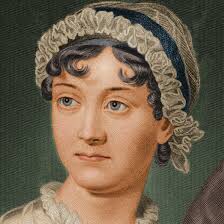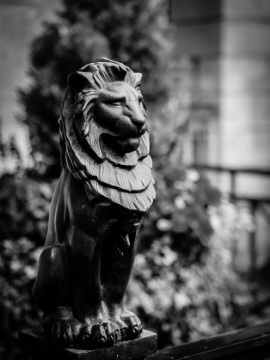
I’m not from around these parts. The West Country, I mean. As you may know, I originate from East London – that’s where I spent the first twenty years of my life. But for the last twenty-five, Bath and its surrounds have been my spiritual (and actual) home. London got too much for me. Even when I was young I knew I was a city girl with a country girl screaming to get out. Not that Bath is the country, but it seemed like it to a girl who’d grown up around concrete tower blocks, like me. I’ve been thinking about my adopted hometown a lot lately, not least because I’ve been re-reading all Jane Austen’s novels. Two of her novels are partly set in Bath – and all her novels mention Bath in some way. So that’s what I want to talk about today; Bath as Jane Austen would have known it in the Georgian period, and Bath as we know it today.
We in Bath are a bit obsessed with our Jane Austen heritage. Her family lived in Sydney Place, Green Park Buildings, and Gay Street for a few years. The Jane Austen museum is currently housed just a few doors along from where she lived on Gay Street. There’s a Jane Austen festival in Bath every September, where people come dressed in Regency costume and mince around the fancy parts of Bath on a promenade (I’ve always said I’d like to go one year, but I don’t have the kit). But Jane Austen evidently wasn’t terribly fond of Bath. She was wealthy, but always on the lower fringes of society, which I think made her somewhat bitter about Bath – because being in ‘the best circles’ was what Bath was all about.
“Anne did not share these feelings. She persisted in a very determined, though very silent disinclination for Bath.” Persuasion, by Jane Austen (had to find that passage myself, thanks for nothing, Google).

On the surface, the Bath scene in Jane Austen’s day appears super-smashing. All us Austen fans view it with rose-tinted glasses, but on closer inspection, it all seems a bit…hectic. People flocked there for a ‘change of air’ (I never quite understand regency people’s obsession with breathing in different air – like inhaling and exhaling air in one place is going to be more beneficial for your health than breathing it in another). And all the older men seemed to go there because they were ‘gouty’ (no idea how being in Bath would help). Reading ‘Persuasion’ and ‘Northanger Abbey’, I’m starting to wonder if anybody actually lived in Bath. It doesn’t seem that those of ‘good breading’ did, anyway. Ladies and gentlemen seemed to venture from London or their country estates to Bath purely for a season – to take in all its attractions and amusements. If you had lots of money, you would be driven to Bath in your carriage to take up lodgings for about six weeks or so. And Bath was absolutely choc-full of ‘lodgings’. The most sought-after Georgian houses being near the centre of town – the main fray – so that people could parade themselves up and down Milsom Street, perhaps nipping into the shops for a pair of gloves or a bit of ribbon or something (there’s simply nothing exciting to buy in Georgian England – you can’t get an iPad or anything). But most importantly, one must be seen amongst other ladies and gentlemen from the best families, not in ‘low company’ (ugh).

In Regency times, the gentry loved nothing more than to attend The Pump Rooms on a daily basis. In the Pump Rooms these days, tourists just sit down to eat finger sandwiches and drink the disgusting spa water, which tastes like eggs. But from reading Austen’s books, I can’t quite see the lure of the place. People just stood about in their best clothes getting jostled, hoping to catch sight of somebody who was vaguely of their acquaintance (note: you couldn’t just go up and say ‘hello’ to somebody in those days – no, no, no – you had to be introduced before anybody could become your acquaintance). Many women came on the hunt for a wealthy husband. It was really just a bunch of fashionable people desperate to be seen with other fashionable people. In the evenings, they would attend a play or a recital or a ball. But even the balls sound hellish when Austen describes them. Again, people constantly looking about in horribly crowded rooms for somebody they might just recognise from home or from the season before; somebody who could provide them with amusement for a couple of hours. I’m starting to think rich Georgian people were just generally very bored. And once they were thoroughly bored of Bath, they would nip off to Brighton or London and spend another month or so pissing about doing nothing in particular there too.

As much as I and other Austen lovers look back with a fond eye on Regency England, the reality is, people like you and I would have had a crappy time of it. Working people did not fanny about ‘taking the air’, or calling on other rich people’s ‘lodgings’ in The Royal Crescent or The Circus – leaving their card and hoping for a dinner invitation. Nope, people like you and I waited hand-and-foot on the upper classes. In fact, I as a nurse, would not have been considered as respectable at all. In Persuasion Anne Elliot says whilst speaking of Nurse Rooke,
“Women of that class have great opportunities, and if they are intelligent may be well worth listening to.” Anne Elliot, Persuasion, by Jane Austen (yep, had to leaf through for that passage too – I’m a saint).
Women of that class? If they are intelligent? You cheeky bint! As far as I can make out, even very wealthy people who had unfortunately made their money from trade (eeew, trade, yuk!) weren’t very well respected. No, inherited wealth was the only way to go. Which I think is why Austen couldn’t stomach Bath; because Bath was a heightened version of the prejudice people on the lower fringes of the gentry suffered in their everyday society. Imagine how the poor must have felt!

So, what I’m alluding to is Bath is a better place now than it was in the Georgian period. Well, it is for scruffy urchins like me. Don’t get me wrong, I love nothing better than reading the works of Jane Austen – especially when she’s talking about areas I know so well, like Camden Place and Laura Place and Westgate Buildings. But Bath back then was crazy. And admittedly, even I don’t live in Bath anymore. It got a bit much for me (much like London did). Like Jane, I favour the country. But the great thing about Bath is that it’s really only a stones-throw away from the country. So, I moved some miles down the road where things were a little quieter. But I still consider Bath as home in some ways: It was my first escape from London. I trained to be a nurse in Bath. I made the best friends in the world in Bath. I met my husband in Bath. I gave birth to two children in Bath. I do pop into Bath very regularly the with the kids to hit the shops, or sit around cafés and coffee shops – y’know, take the air and all that; walking in the footsteps of Jane. You should totally visit – you could find some suitable lodgings. Then I’ll drop in my card to your footman or something, and you can invite me to dinner. Then we’ll catch a recital later, yeah?
PS: Read Erin’s blog and see some of her other pictures HERE.


What a great post! And so true: most of us today would have had an awful time living in the Georgian and Regency world. In fact, we probably wouldn’t even have made it past age 5.
But the manners in her novels captivate us. In our world that often seems so vulgar and crass, we yearn (I think) for some “restraint” and “boundaries.” She provides that outlet for us.
I love Bath. I’d live in it in a heartbeat. Having been able to go in regularly when we lived near Trowbridge made me realize that.😊
LikeLiked by 1 person
That’s very true about the restraint and boundaries. Perhaps that IS what we yearn for. So weird to think you were only down the road in Trobo once upon a time! 😀
LikeLiked by 1 person
i do have a card for my book. Will that be sufficient? My ife is fascinated with Bath, and I will share this with her. Maybe we can take the waters there one day!
LikeLiked by 1 person
You should, it’s a threat place to go! 👍🏻
LikeLike
I’m Cornish born and bred and Bath isn’t that far from me. I have been up a few times and really liked the city, especially the culture and architecture.
LikeLiked by 1 person
It is beautiful, as is Cornwall. Spent a recent bank holiday weekend there – lovely! 👍🏻
LikeLike